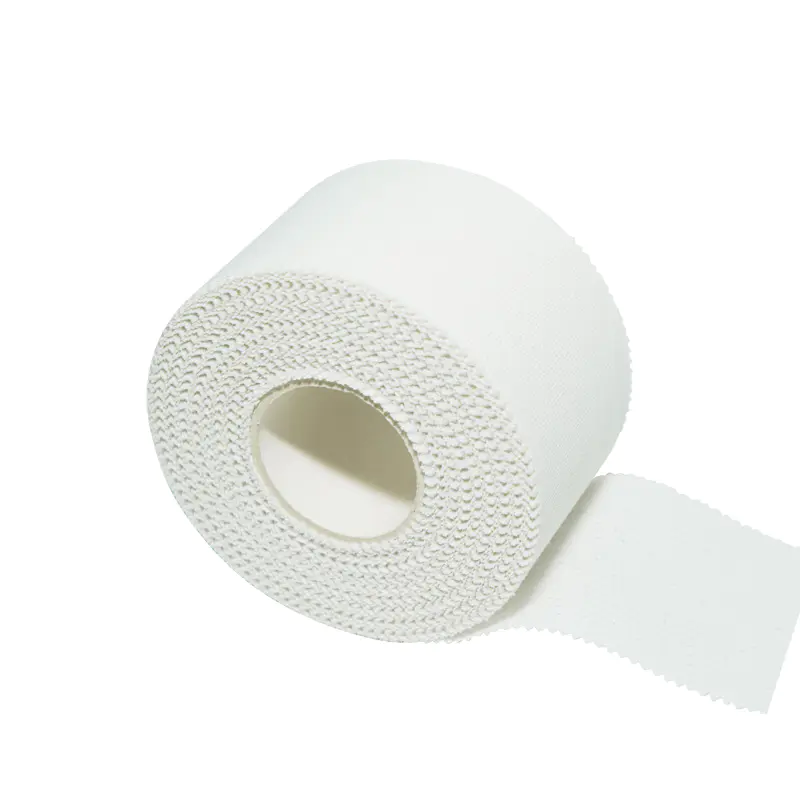Hockey tape isn't just any adhesive strip; it's a specialized product engineered to meet the unique and rigorous demands of ice hockey. Its distinctive properties provide several critical advantages for players, directly impacting their performance and the longevity of their equipment.
Here's a breakdown of what makes it special:
Superior Grip and Control: This is arguably the most paramount function.
For the Stick Handle (Butt End): Cloth hockey tape, with its specific texture and robust adhesive, provides an unparalleled grip for a player's gloved hands. It prevents the stick from slipping, even when hands are sweaty or wet from ice and snow, ensuring continuous control during intense maneuvers like shooting, passing, and stickhandling. Many players create a "knob" at the top of the stick with tape, which further enhances grip and helps them locate the end of the stick without looking.
For the Blade: When applied to the stick blade, the tape creates a textured surface that significantly enhances "puck feel" and control. It provides friction between the blade and the puck, allowing players to cradle, drag, and manipulate the puck with greater precision. This also aids in directing shots and passes more accurately.
Enhanced Puck Feel (Blade Taping): The application of tape on the blade significantly influences how a player "feels" the puck. The tape provides a dampening effect that helps absorb some of the impact of the puck, allowing for better "soft hands" and improved control. Different tape jobs (e.g., thicker layers, specific patterns) can alter this feel, allowing players to customize their stick to their preference – some prefer a more direct, raw feel, while others like a more cushioned touch.
Stick Protection and Longevity: Hockey sticks, particularly the blades, endure immense stress and impact from hitting the puck, the ice, and other sticks. Tape acts as a sacrificial layer, absorbing much of this abuse. It helps prevent splintering, chipping, and excessive wear on the composite or wooden blade material, thereby extending the lifespan of an often expensive piece of equipment. Without tape, the blade would quickly degrade and lose its integrity.
Moisture and Ice Resistance: The ice rink is a wet and cold environment. Hockey tape is designed to withstand these conditions. Its adhesive is formulated to maintain its stickiness even when wet, and the material itself resists saturation. Many players also apply wax over their blade tape (especially for the lower part of the blade) to further repel water and prevent snow and ice buildup, which can otherwise cling to the tape and negatively affect puck control.
Customization and Personalization: Hockey tape offers an incredible degree of customization:
Handle Knobs: Players can create specific knob shapes and sizes on the butt end of their stick, tailoring it perfectly to their hand and grip style.
Blade Patterns: Different patterns of tape on the blade (e.g., full coverage, specific toe or heel coverage, "candy cane" wrap) are used to achieve different feels and levels of protection.
Shaft Grips: Some players apply tape to the shaft of the stick in various patterns to add extra grip, aiding in stickhandling and shooting.
Aesthetics: While functional, tape also allows players to personalize their stick with different colors, adding a touch of individual style.
Securing Protective Equipment: Beyond sticks, a specific type of clear hockey tape (often called shin tape or sock tape) is crucial for securing protective gear. It's used to hold socks over shin guards, ensuring that the shin guards stay firmly in place during aggressive skating, checking, and falling, preventing them from shifting and exposing areas to injury.
Types of Hockey Tape:
Cloth Hockey Tape: This is the most common and versatile type. Made from a durable cotton or poly-cotton blend with a strong, sticky adhesive. It's used for both the blade and the handle of the stick. It provides excellent grip, protection, and allows for good puck feel.
Friction Tape (or Grip Tape): A less common but specialized form of cloth tape, often coated with adhesive on both sides. It's extremely tacky and is primarily used on the handle of the stick to create an exceptionally grippy surface, especially for the knob or specific grip points.
Clear (Shin/Sock) Tape: This is a stretchy, flexible, and transparent polyethylene tape. It's not typically used on sticks. Its primary purpose is to secure hockey socks over shin guards, keeping them snug and preventing them from sliding down or bunching up during play.
In summary, hockey tape is a specially engineered product that plays a multifaceted and indispensable role in the sport. It directly contributes to a player's performance through enhanced grip and control, improved puck feel, and extended equipment life, all while allowing for personal customization.








